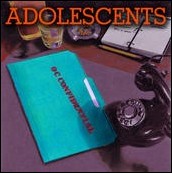The Science of Sleep

Image: The Science of Sleep:”O.C. Confidential hits stores in June” Photo courtesy of www.myspace.com:
January 6, 2007
If dreams are the playground for the mind, then the brain of director Michel Gondry must be comparable to Toon Town at Disneyland. Gondry, director of the quasi-romantic, equally downtrodden and upbeat “Eternal Sunshine of the Spotless Mind,” returns with a vehicle that resembles that of a scrapbook, a visual pastiche resembling a page from an I Spy book, “The Science of Sleep.”
The premise is familiar Charlie Kaufman territory, just without a screenplay by Charlie Kaufman (“Adaptation, “Eternal Sunshine”). The story centers on a young man, half French and Mexican, who returns to France to be with his mother after the death of his father.
Stephane, played with schoolboy neuroticism by Gael Garcia Bernal (“The Motorcycle Diaries”), works at a mundane job typesetting for a calendar company, but dreams of making artwork for his own calendar of disasters: earthquakes, plane crashes, etc. He also invents things, such as a one-second time travel device, and a thought transmitter, each resembling nothing more than a pair of old headphones, bike helmets and rubber tubing, but are brought to life by Stephane’s wild imagination.
Stephane is a foreigner in his own country. Born in France, but raised in Mexico, Stephane struggles with the local tongue as much as he struggles with his reality. See, Stephane has a tendency to let his dreams meld into his reality, something that becomes a problem when trying to woo his new neighbor, the similarly named Stephanie.
Often times the actual storyline gets lost at the expense of the extravagant dream sequences, but that’s half the point. The viewer is supposed to be as submerged into Stephane’s twisted psyche as Stephane is himself. Gondry also employs a documentary feel to Stephane’s story, giving the viewer almost a sidekick complex; always at his side but helpless to change the outcome.
The love story is cute and hopeful, but not without its share of pain – a carry over from “Eternal Sunshine.” However, the dream sequences are amplified beyond anything done in Gondry’s previous films. While it’s hard to recreate how everyone dreams, Gondry perfectly captures the feeling of complete randomness; something from your daily life, however insignificant, can play a large role in your dreams. Houses can decay in an instant, getaway vehicles can be made out of cardboard and stuffed horses can gallop in meadows.
Gondry is wise not to overload us with CG images, rather giving the dreams a PBS children’s programming feel. This is partially due to the mentality of Stephane, a child trapped in a man’s body.
The film is not without plot holes, the biggest being that Stephane could have just told Stephanie about his condition and it would have probably cured a lot of the confusion between the two. That’s rarely ever done in the movies these days and this film is not about words, but rather images.
“The Science of Sleep” is a genuine work of creative genius ?” a visually stunning film with charm to spare. Gondry is at the top of his craft and if this film is any proof, then we can expect many more wondrous things to come from that dream land of his.
Scheduled to be released in Sacramento on Friday, Sept. 29.
Rating: 4 Stars
Total stars possible: 4
Frank Miller can be reached at [email protected]











































































































































